Advertisement
Better Living Through Chemistry: Fred Tomaselli’s Psychedelic Art
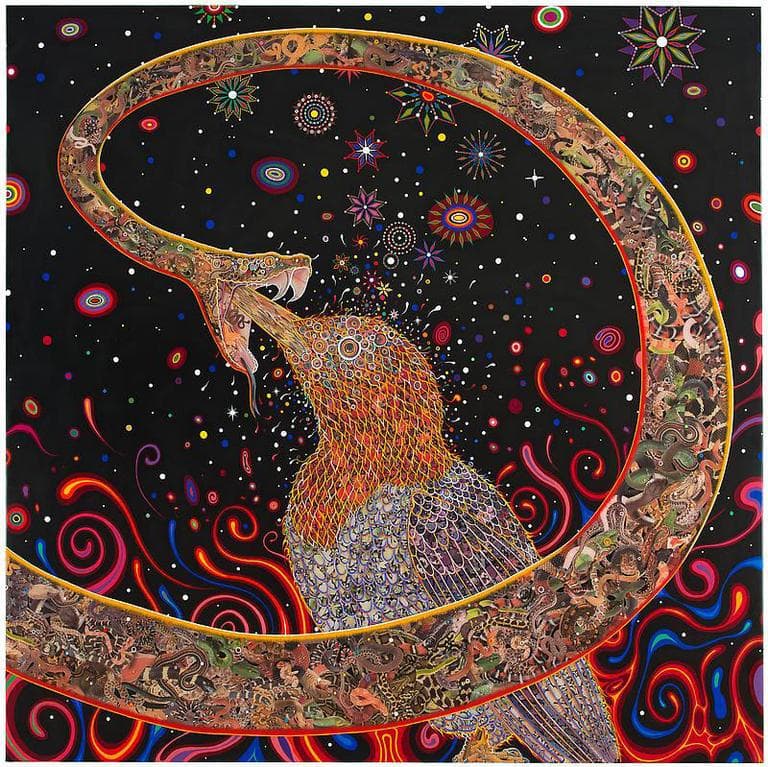
Fred Tomaselli is one of the premiere psychedelic artists at work today. The California-raised, Brooklyn-based painter is best known for embedding actual pharmaceutical pills, hallucinogens and marijuana leaves in his glossy, resin-covered paintings, but he says it’s been years since he’s included drugs in his work. His eye-popping collages of images clipped from magazines, clothing catalogs, and birding guides still blow minds though.
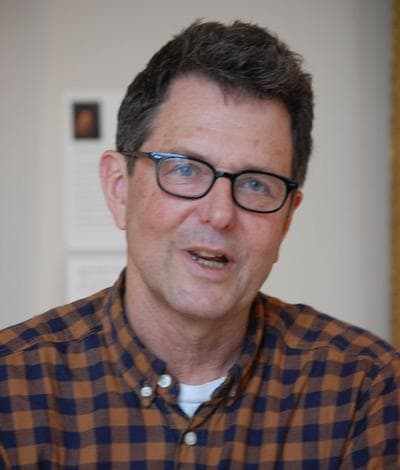
At root, Tomaselli’s art is about creating windows into alternative inner and outer realities—inspired by drugs, by 1970s conceptual art, by transcendental encounters with nature, by utopian movements, by the make-believe of Disneyland, which he could see from his childhood home. He spoke about his career at the Museum of Fine Arts on April 11 in an event organized by the School of the Museum of Fine Arts. Below are some of his comments.
- “When I was a kid, I went to a James Turrell show. … I remember my friends and I were laughing at this black rectangle on the wall. … I went over to touch the thing. … And my hand went into limitless space. … For me it was more interesting that what you see isn’t necessarily there. I was really interested in art asking you to pay attention.”
- On seeing a Bruce Nauman retrospective at the Los Angeles County Museum of Art in 1973: “To me it was like a Disneyland of the repressed. It was all the things that 'The Happiest Place on Earth’ didn’t want to acknowledge.”
- “I was like a stoner at the time, which is a hippie without ideology.”
- “I’m of the age that I’m a little bit too young to be a member of the ‘60s. My ‘70s were like the ‘60s with birth defects.”
- "It left me and people of my generation with this crisis of faith. What to you do with all this rubble?”
- “I was initially making installations about escapism. … I wanted them to be simultaneously escapist and to get people to think about the escapist culture we lived in.”
- “This combination of the reality industrial complex that helped create Disneyland, that helped create LSD, that helped create surfer culture was to create this giant landscape of unreality.”
- “Artificial reality was more real to me than reality. It’s a dominant part of the culture we live in.”
- In the late 1980s, he exhibited installations: “I had abandoned paintings because of the burden of history, but I was making secret drawings and watercolors, plein air. … I got a lot of pleasure out of painting.”
- “This led to the neurological maps. … I started doing them [portraits] based on questions in which I would ask people to give me their birth date and drug history. … They became these portraits of inner and outer space.”
- “I guess I was kind of producing conceptual art by using a system [astrology] I didn’t believe in.”
- “Half of my aesthetic comes out of the garage [surfing and car culture] and half of it comes out of art school.”
- Minimalism had “this idea of paintings as a transportational vehicle to take you out of yourself and into another world, and I thought that interestingly paralleled some of the rhetoric of psychedelic drugs.”
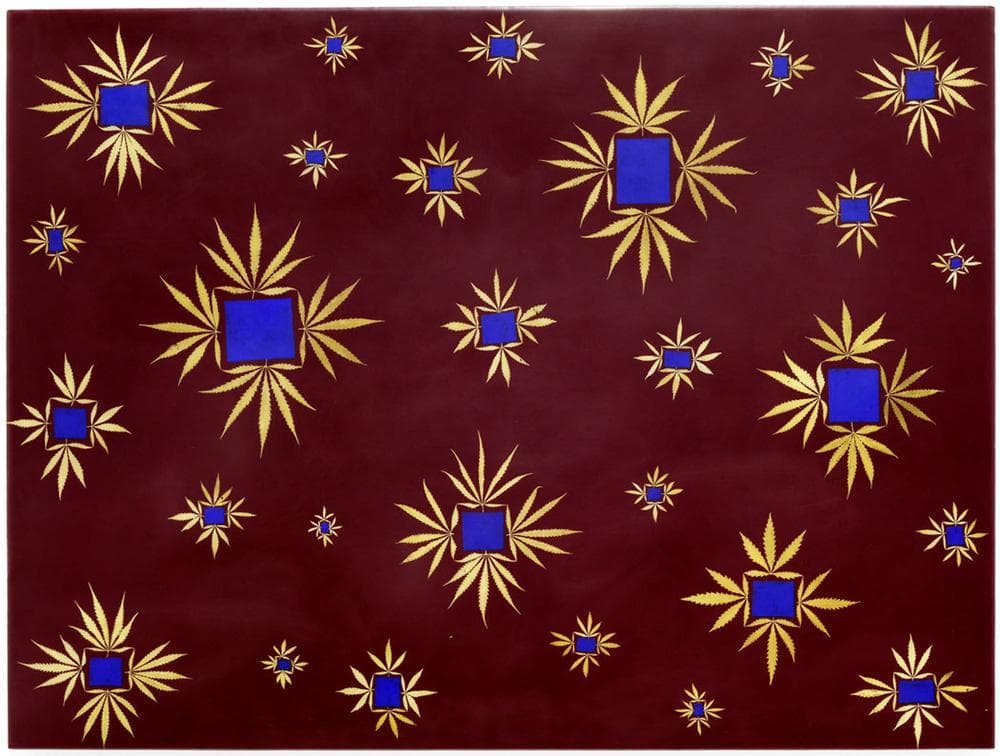
- Around 1991, he began making geometric abstractions with patterns of actual pills embedded in resin: “Instead of traveling through the bloodstream to alter consciousness, they travel through the eyeballs to alter consciousness.”
- “I wasn’t really comfortable with calling myself a painter. But I was comfortable with making objects that looked like paintings.”
- “At that point I was just mostly using pills and objects that come out of the pharmaceutical industry. I wanted to use objects that had more subcultural allusions. … To me it was all the same thing, better living through chemistry.”
- “I grew pot leaves to use in art.”
- “Putting hemp leaves into my world also installed the shape of nature into my work. I liked how the soft shape of nature began to combine with the hard shape of the pharmaceutical industry.”
- On his 1994 painting “Super Plant”: “It’s a hybrid of six different psychoactive plant materials”—hemp leaves, ephedrine, coffee, morning glory, tobacco, magic mushrooms. “The reason I called it ‘Super Plant’ was because if it ever existed it would rule the world.”
- “I started to introduce photo collage with painting with real things. … It was another place where reality got slippery.”
- “A lot of people thing my work [method] is really etched in stone because of the pristine surfaces and the fact that I cover up all my struggle with craftsmanship.”
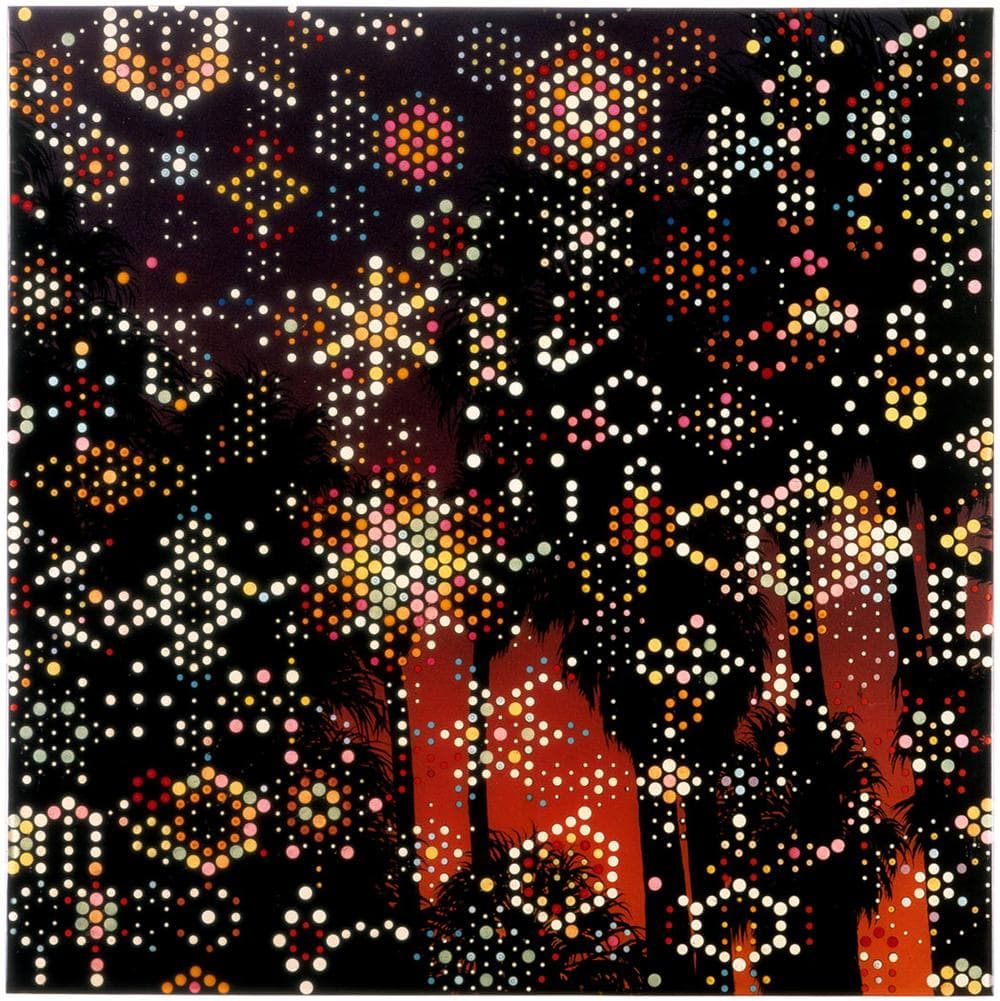
- “I love the Hudson River School [landscape painting from the 19th century]. … But I don’t feel I would ever be able to make those kinds of landscapes because for me landscape is fraught with geopolitical struggle.”
- “The history of America is the history of the imposition of ideology onto landscape. And the idea of perfection. … Of the mansion on the hill.”
- “The history of Modernism is the history of idealism co-opted by ideology.”
- “I have all this Catholic damage and I’m working on that too. … Being raised a Catholic I think has a lot to do with my relationship to materiality. I was raised with the veneration of the true cross, the Shroud of Turin.”
- “Utopianism is really about our separation from perfection on earth.”
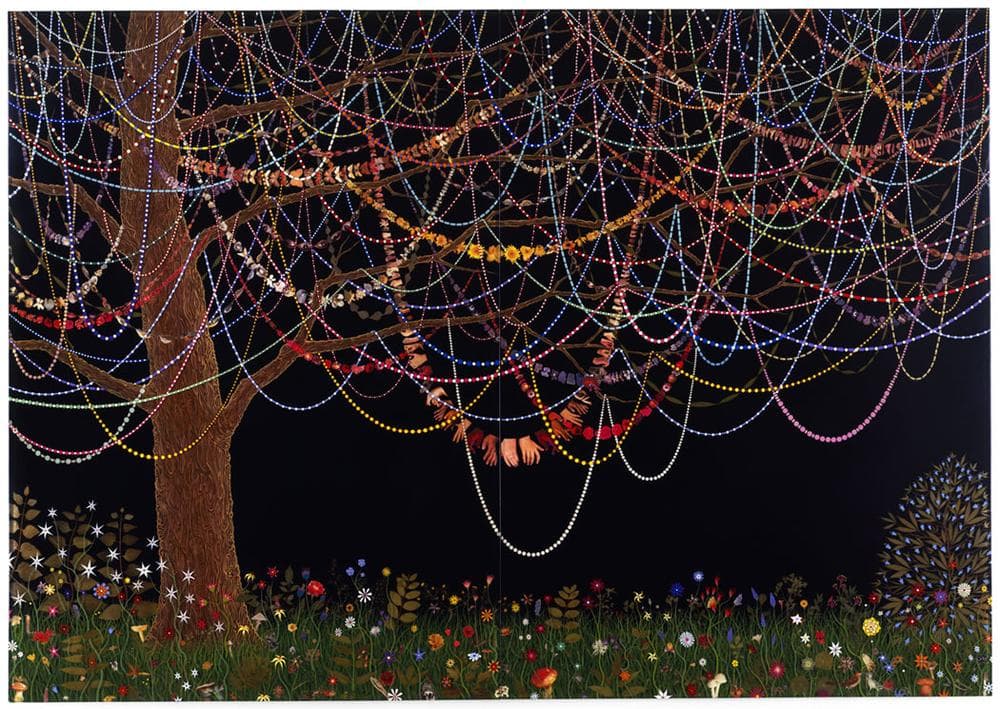
- “There’s no pills in here. … Around 1994 people were expecting them to be there, so I took them out.”
- Tomaselli began a series of psychedelic alterations of photos on the front page of The New York Times. “In 2005, Bernie Ebbers was expelled from Wall Street [because of accounting fraud and conspiracy at the telecommunications company WorldCom that he headed]. … [The photo on the cover of ‘The New York Times’] It reminded me very much of the expulsion of Adam and Eve from the Garden of Eden. Most of me loathed this guy, loathed everything he represented. … But I was also kind of moved by the clutching of his hands with his wife.”
- “I just started drawing on it. I was already really upset and angry how things were going after 9/11. … This was a sort of super rant.”
- “We ended up turning it into blotter acid. … I just thought it would be the worst acid you could ever take.”
- “This wasn’t the first blotter acid I ever made. I’ve been making them every five years or so since 1990.”
- “I’m basically scanning and printing these ‘New York Times’ on watercolor paper.”
- “I make maybe three paintings a year. And in between and at night I work on these.”
- “I get to impose my subjective reality on this allegedly objective realty.”
- “I’m obviously on the left wing side of things. But I really think my politics are closer to Miro’s constellation drawing from World War II, done while he’s on the run from the Nazis. … To me there’s something intrinsically political in saying the world may be going to hell, but I’m still making work.”
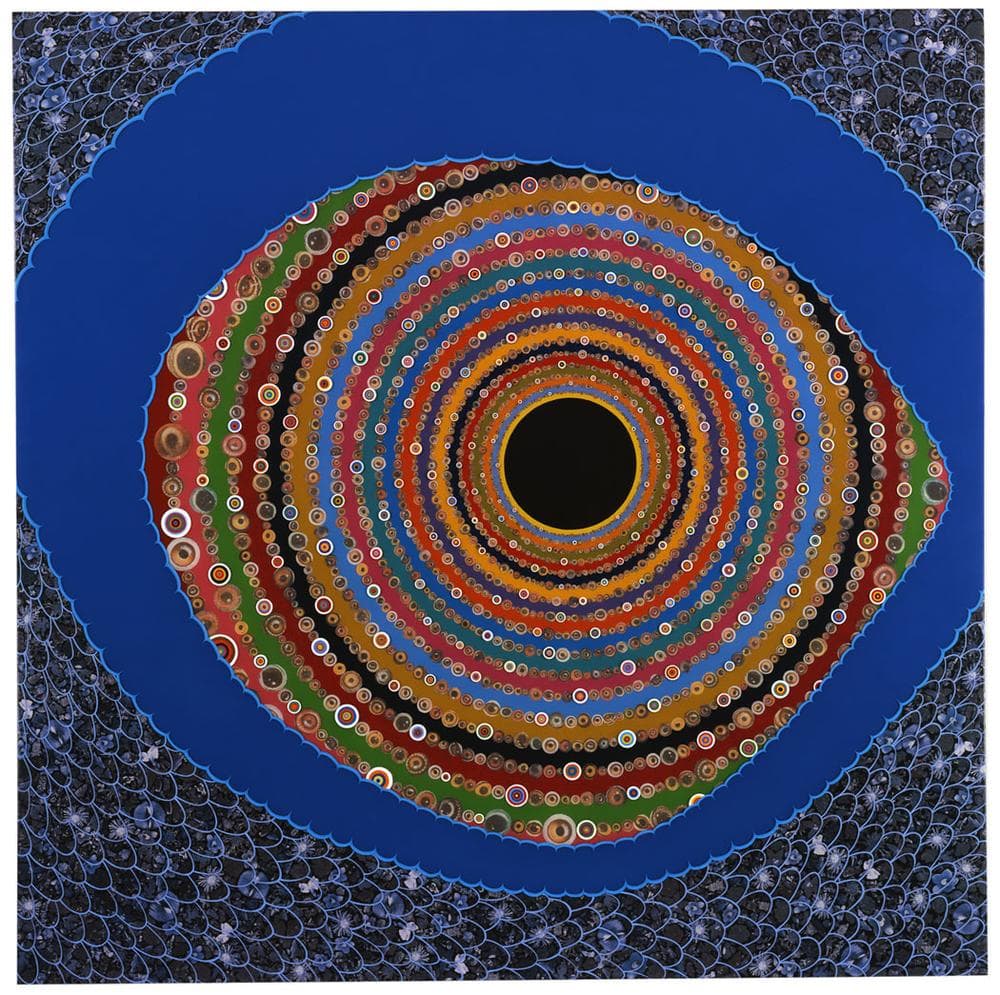
This program aired on April 16, 2013. The audio for this program is not available.
